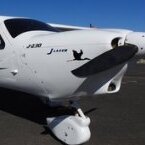-
Posts
3,464 -
Joined
-
Last visited
-
Days Won
47

RFguy replied to onetrack's topic in Aircraft Incidents and Accidents

RFguy replied to onetrack's topic in Aircraft Incidents and Accidents

RFguy replied to GolfWhiskeyHotel's topic in Aircraft Building and Design Discussion

RFguy replied to GolfWhiskeyHotel's topic in Aircraft Building and Design Discussion

RFguy replied to GolfWhiskeyHotel's topic in Aircraft Building and Design Discussion

RFguy replied to GolfWhiskeyHotel's topic in Aircraft Building and Design Discussion

RFguy replied to GolfWhiskeyHotel's topic in Aircraft Building and Design Discussion

RFguy replied to GolfWhiskeyHotel's topic in Aircraft Building and Design Discussion

RFguy replied to GolfWhiskeyHotel's topic in Aircraft Building and Design Discussion

